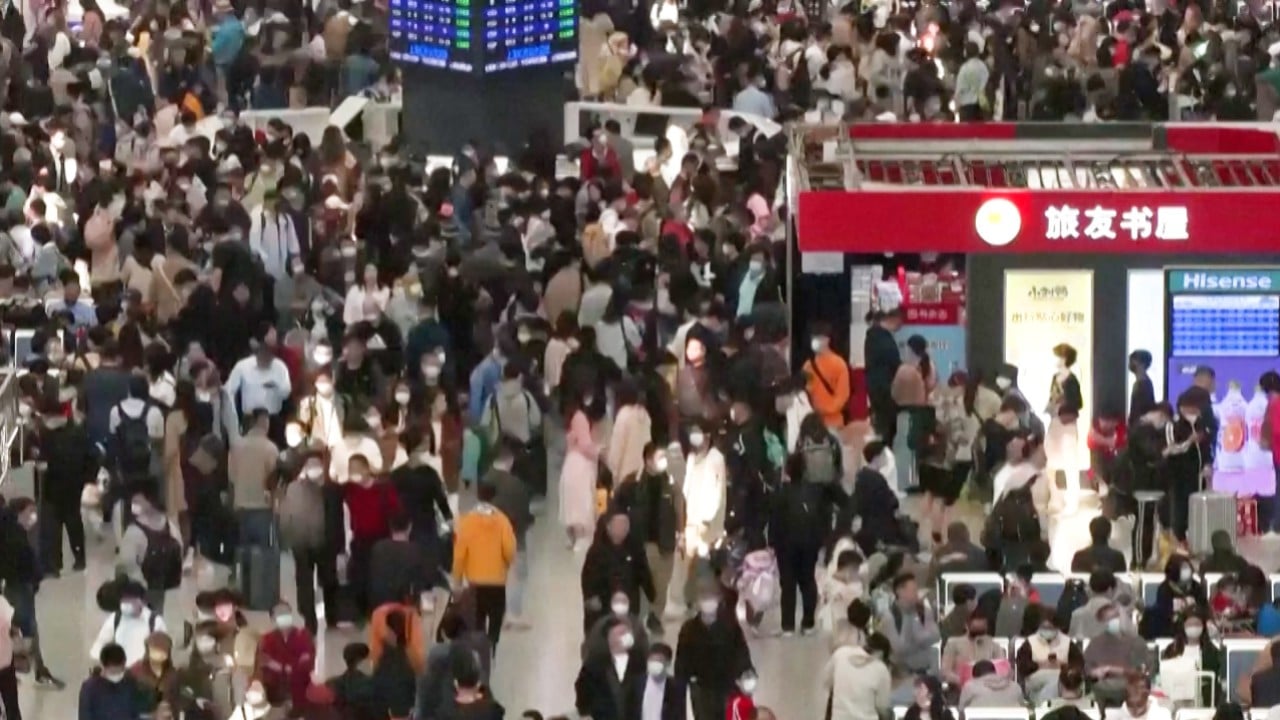
China aviation: China Southern, Air China and China Eastern trim losses on domestic travel rebound
- China’s top three state-owned airlines – China Southern, Air China and China Eastern – have posted cumulative losses of around US$27.4 billion since 2020
- China’s air passenger traffic hit a record high in July with the total trips made reaching 62.4 million
China’s three largest airline companies reported significantly narrower losses for the first half of 2023 as Beijing’s lifting of Covid-19 restrictions late last year unleashed pent-up demand for domestic travel.
China Southern Airlines said its net loss fell 75 per cent to 2.88 billion yuan (US$395 million) in the six months to June 30, compared with the same period a year earlier. First-half losses at flag carrier Air China shrank to 3.45 billion yuan from 19.4 billion yuan. At Shanghai-based China Eastern Airlines, they fell by around two-thirds to 6.3 billion yuan.
The state-owned airlines, among the largest globally, have borne some of the biggest financial losses from the pandemic. Their combined, cumulative losses have come to around 200 billion yuan since 2020.
Domestic travel rebounded earlier this year, particularly during the peak summer season, as people finally got the chance to take railway and aeroplane trips after being stuck at home for more than three years. The country’s air passenger traffic hit a record high in July with the total trips made reaching 62.4 million, according to the latest data from the Civil Aviation Administration of China.
A slumping property market and high youth unemployment are seen keeping consumers wary of spending, however, and international air passenger traffic is still slower to recover with such traffic in July 51 per cent lower than in the same month of 2019, according to CAAC data.
Some expect international travel to improve ahead with the return of more international flights. China recently lifted a ban on group tours to countries including the US, UK and Australia, and a planned increase in US-China routes from September 1 is expected to boost flight capacity.
Chinese travellers spent US$255 billion overseas in 2019, accounting for almost 20 per cent of all international tourism spending, according to the United Nations’ World Tourism Organization.
“The pent-up demand is clear – 40 per cent of travellers want their next trip to be outside China,” said Steve Saxon, a McKinsey & Co partner in Shanghai.
“China’s economy is slowing, but most consumers saved during Covid, and our research shows people still want to spend on travel – 40 per cent say they will spend more for their next trip, versus only 17 per cent saving they will spend less,” he said.
He forecast Chinese airlines’ flight capacity to be close to 100 per cent of pre-Covid-19 levels by the end of the year.
Others, however, expect a full recovery in outbound tourism to take time due to a weakening economy and geopolitical tensions.
Some also note that Chinese carriers often lose money on international flights anyway. In the pre-Covid-19 days, strength in domestic flights helped to subsidise Chinese carriers’ expansion plans.



